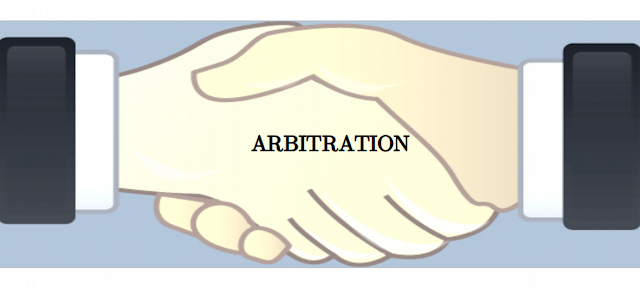CROSSROADS OF ADMIRALTY AND CORPORATE LAWS: CONCURRENT PROCEEDINGS
GUEST POST: BY AYUSHI H DANGRE
When Insolvency and Admiralty proceedings are brought in the same jurisdiction, it gives rise to two situations:
1) Where in rem claimants have issued proceedings in Admiralty Court prior to the petition for winding up.
2) Where in rem claimants have issued proceedings in Admiralty Court between the presentation of a petition for winding up and the date of winding up order.
It is pertinent to note at this juncture the observations of Hon’ble Courts in the case of M Krishna Shreedhar v K Shajahan1 . The court held that in the absence of specific State Laws on the priority of maritime claim and maritime lien, the field is occupied by International Conventions. The important conventions, which require to be considered, are the International Convention on Maritime Liens and Mortgages, 1993 and the International Convention on Arrest of Ships, 1999. At the first instance, the International Convention for the Unification of Certain Rules relating to the Arrest of Seagoing Ships, Brussels, 1952 was in vogue and that has now been replaced by the International Convention on Arrest of Ships, 1999, in the United Nations/International Maritime Organization Diplomatic Conference on Arrest of Ships held at Geneva from 1st to 12th March, 1999, to which India is also a signatory. Therefore, these Conventions apply insofar as they are not inconsistent with the laws of the State Party. It is to be noticed that all the claims made by the plaintiff and the intervenors are maritime claims in terms of the International Convention on Arrest of Ships, 1999.
Moreover, more particularly Article 4(1)(a) of the International Convention on Maritime Liens and Mortgages, 1993, it is clear that claim for wages and other sums due to the master, officers and other members of the Vessel in respect of their employment on the Vessel, including costs of repatriation, etc., stands on a higher pedestal, except the claim for salvage of the vessel, which takes priority over all other maritime liens, as stated in Article 5(2) of the International Convention on Maritime Liens and Mortgages, 1993, where the ranking of maritime liens set out in Article 4 is specified. Article 5(3) clearly states that the various maritime liens set out in each of subparagraphs (a), (b), (d) and (e) of paragraph 1 of Article 4 each lien will rank pari passu as between themselves, which means that the claims falling under Article 4(1)(a), namely claim for wages and other sums between master, officers and other crew of the Vessel, will rank pari passu as between themselves. Likewise, claims under Article 4(1)(b), (d) and (e) would rank equally among themselves. Clause (c) of Article 4(1) has been excluded in the priority of maritime liens as it has been clearly stated under Article 5(2) that reward for the salvage of the Vessel will take precedence over all other maritime liens.
The priority of liens generally: It would seem that the determination of the priority of liens over one another rests on no rigid application of any rules but on the principle that equity must be done to the parties in the circumstances of each particular case. There is, however, a general order of priority, and there are certain general rules which, in the absence of special circumstances, the Court tends to apply. As to the general order of priority, the right of a dock and harbour authority exercising its powers under the Harbous, Docks and Piers Clauses Act 1857, or under the similar provisions of its special Act, to detain a ship in respect of damage to dock works, or to detain and sell a ship in respect of dock and harbour dues, or to take possession of and sell a wreck in respect of conservancy charges, overrides all maritime liens.
Next, in order of priority are maritime liens; these usually rank above mortgages and statutory liens. A mortgage generally has precedence over a statutory lien2. A possessory lien ranks after all liens which have attached before, and before all liens which attach after, the possessory lien holder has taken possession of the ship.
No, it would be safe to imply that claim arising out of insolvency proceeding can be attributed to being statutory lien which is held by creditors against the company. Unlike the maritime lien, a statutory lien comes into existence when the legal proceeding for enforcement commences has been initiated and not when the event occurs that gives rise to the claim. Therefore, if the defendant sells the ship before the legal proceeding has been initiated, the statutory lien cannot be enforced against the vessel by an action in rem. A subsisting charge on the ship prevails over a statutory lien.
At this stage, as can be understood from the above extracts, that maritime lien is given priority over statutory liens, which is to say that maritime lien would prevail over an insolvency claim. Moreover, this as has been confirmed by the Madras High Court as well in M/s Smit India Marine Service v. Mr. Shanmugam Rajasekar3 that once a vessel is arrested and proceeded against in rem, it would only be subject to admiralty jurisdiction and this would mean that first priority would be given to maritime claimants even if there are winding up or insolvency proceedings against the shipping company. Internationally as well in the case of the Orliea4, this has been observed that in bankruptcy and insolvency, maritime liens retain their priority over other debts.
1 2013 SCC Online Mad 2854.
2 Blacks Law Dictionary: Statutory lien is one which is created involuntarily by operation of law and does not need the prior consent of parties to such lien for it to be enforced.
3 2018 SCC Online Mad 13.
4 1833 3 Hag Adm75 (83).


